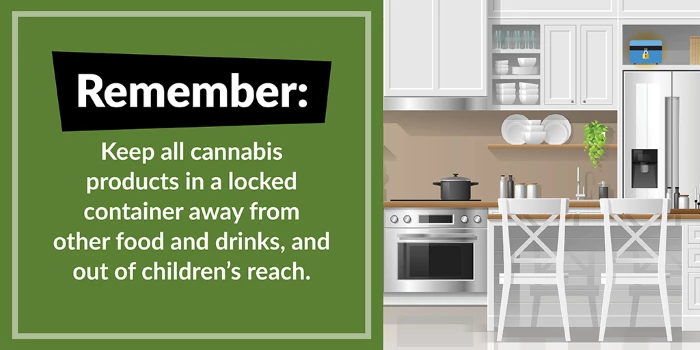The Serious Downside
"These events weren't supposed to happen: Canada prided itself on a public health, strict regulatory approach to legalization. I find it very concerning it doesn't seem to have worked.""These findings suggest that the introduction of legal commercial edible cannabis products was a key factor associated with emergency department visit frequency and severity.""My view is that there is no need for cannabis products to look and taste like candy, baked goods or snacks.""These products should be treated like a poison because that's what it is if a young child ingests it.""It's absolutely astounding that we are three years post-legalization and we have so little information about what has happened."Dr.Daniel Myran. public health and preventive medicine specialist, The Ottawa Hospital

A new study headed by Dr. Myran, published in the online medical journal JAMA Network Open, found significant numbers of children under age ten suffered cannabis poisoning sufficiently severe to require hospitalization in the wake of legislation enabling the sales of edible cannabis products. The findings, emphasized Dr. Myran, suggest that the federal government's legalization plans designed to prevent any increase in child cannabis poisoning, has failed.
 |
Close to ten percent of all Ontario emergency department visits for young children's poisoning events are attributed to cannabis. Cannabis edibles -- such as gummies and chocolates -- are required to be packaged in plain, child-resistant packaging and should contain up to and no more than 10 mg. of tetrahydrocannabinol (THC) in each package, according to federal regulations.
Dr.Myran and his study team of researchers examined emergency department visits in the province taking place between January 1, 2015, and March 31, 2021 related to child admissions under age ten. Cannabis poisonings were identified in the data, then divided by the researchers into three time categories; the 33 months prior to legalization (Jan.2016-Sept.2018); the 16 months during which only flower-based cannabis products were legal to sell (Oct. 2018-Jan.2020); and finally the first 14 months following legal availability in Ontario of edible cannabis products (Feb.2020-March 2021).
During the five-and-a-half years the study encompassed, a total of 522 children were brought to hospital emergency departments with cannabis poisoning. None of the cases were lethal. The number, rate and severity of cannabis poisonings rose in each of the three time periods. For the 33 months prior to legalization, 81 children under age ten received emergency care for cannabis poisoning, representing a rate of 2.5 visits monthly. Of those children, one-quarter were admitted to hospital for care.
Once cannabis was legalized, during the 16 months immediately following, 124 children were taken to emergency departments for cannabis poisoning, representing a rate of 7.8 visits each month; a three-fold increase over the pre-legalization period, resulting in a stable hospitalization rate. Finally, in the third category, once edibles were legalized, 317 children were brought to emergency departments, a rate of 22.6 visits each month, representing a nine-fold increase in cannabis poisoning over the pre-legalization period.
Poisoning cases sufficiently severe to require hospital admission after edibles were placed on the market saw many more children (39 percent) involved. "These findings suggest that the introduction of legal commercial edible cannabis products was a key factor associated with emergency department visit frequency and severity", wrote the researchers in their conclusion.
Coincidentally, poisonings among children for other reasons, such as ingestion of medications, cleaning products, hand sanitizer for example, decreased in the year following the availability on the market of commercial cannabis edibles. The average age of children arriving at hospital with cannabis poisoning was three years, nine months of age. The kind of cannabis product or how children gained access to them was not part of the study.
The effects of THC, given the size of a child's body mass as compared to that of adult, makes children far more vulnerable to ill effects. In children, cannabis poisoning can manifest with vomiting, confusion, lethargy, muscular weakness and depressed breathing, sometimes requiring ICU treatment. Children, in rare cases, may sometimes end up in a coma.

Labels: Canada, Cannabis Legalization, Child Hospitalizations

0 Comments:
Post a Comment
<< Home